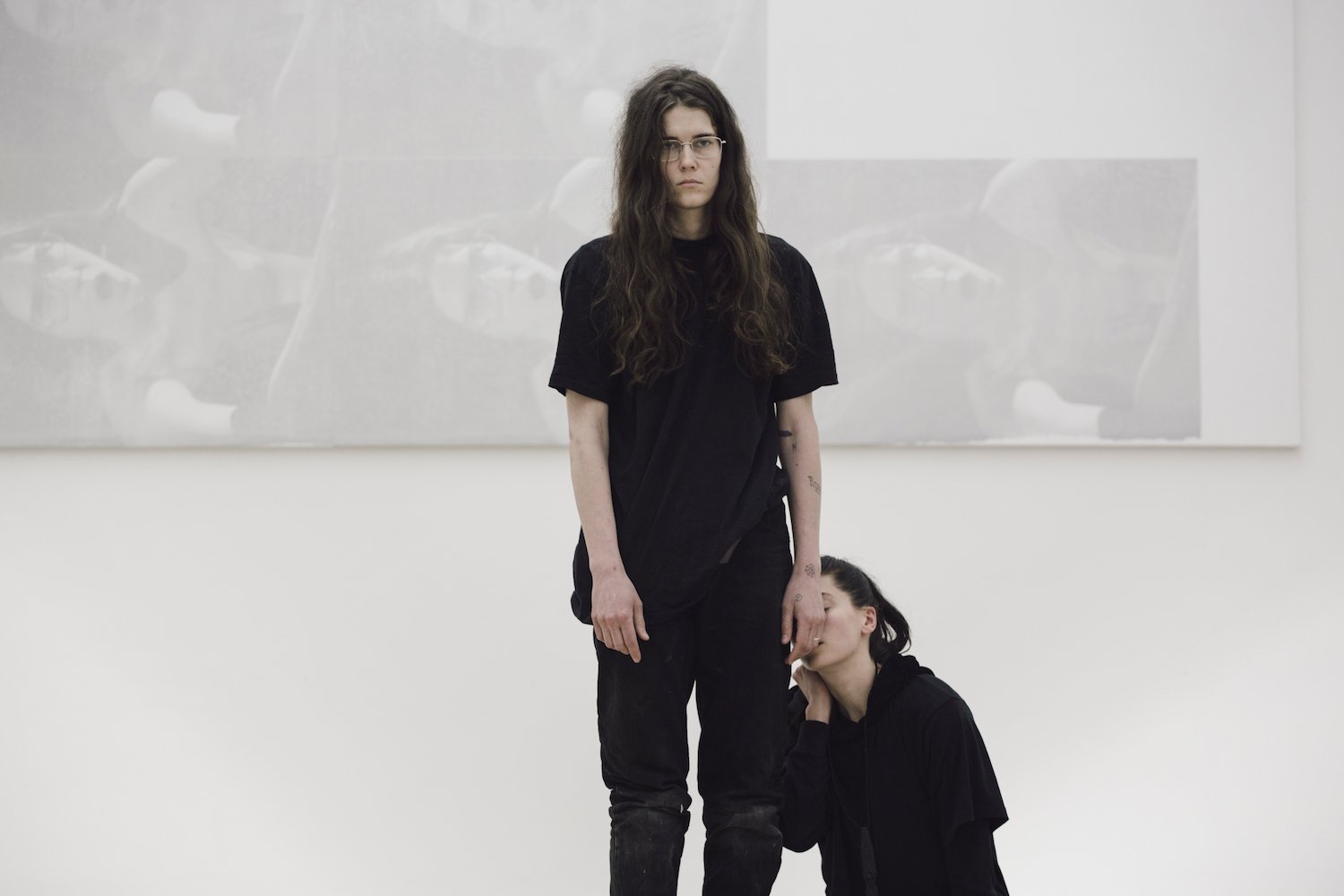
Was it a self-fulfilling prophecy? What was touted as one of the most exciting national pavilions at this year’s Venice Biennale, well ahead of the actual event, has indeed turned out to be an absolute sensation during the Biennale’s preview days: Anne Imhof’s new piece Faust, presented in the German Pavilion.
An early favorite judging from the long lines outside, her project is a top contender to win the Golden Lion for best National Participation, which will be awarded on Saturday.
This year, wait times have been a problem at some of the more celebrated offerings (never did a VIP preview feel less exclusive). Mark Bradford at the US Pavilion commanded a perennial queue that only the most committed would endure, as did Tracey Moffatt’s “My Horizon” at the Australian Pavilion, where she is presenting a set of pieces on migration, asylum, and identity that had biennale-goers standing in line, stoically, for hours.
Billy Bultheel and Franziska Aigner in Anne Imhof’s Faust (2017).German Pavilion, 57th International Art Exhibition – La Biennale di Venezia © Photo Nadine Fraczkowski, courtesy: German Pavilion 2017 and the artist.
But no queue was longer or more violent than the one that formed to access the German Pavilion right after the press conference presenting Imhof’s piece on Wednesday, which signaled the start of her much-awaited live performance. Chaos ensued. Surgically-enhanced collectors elbowed young artists in trendy attire, while curators tried to sneak ahead of everyone else. Decorum and social norms were temporally suspended in this usually civilized context. People wanted in, and they were taking no prisoners.
Queuers, moreover, were being serenaded as all this unfolded by a pair of Doberman dogs barking behind a fence at the front of the pavilion, standing like guard dogs of some secret treasure—or better land. So far, so unpleasant; and yet, so hyped.
Once inside, the mood intensified.
A glass floor has been installed across the span of the pavilion, and for the first few minutes one is overcome by an unnerving feeling of vertigo. Underneath the glass, a series of objects are arranged in clusters: a leather mattress, cuffs, spoons, chains, and bottles of liquids of dubious nature. The whole thing looks like the remnants from a scene straight out of the cult Berlin film Christiane F, gone S&M.
Eliza Douglas and Franziska Aigner in Anne Imhof’s Faust (2017).German Pavilion, 57th International Art Exhibition – La Biennale di Venezia © Photo Nadine Fraczkowski, courtesy: German Pavilion 2017 and the artist.
In one of the small rooms, an industrial sink and a hose—like those you could find in a slaughterhouse, a prison, or a morgue—have been placed next to an electric guitar plugged to pedals and an amp, which looks simultaneously incongruous and perfectly fitting to the scene. The pavilion reeks of sanitary disinfectant, the type of smell that brings bad memories of hospital nights and days at the nursery.
Imhof’s loyal crew of performers wear tattered sport clothes and dirty jeans, and can be found scattered across the space. The troupe includes the artist’s partner and muse Eliza Douglas (an artist herself now represented by the gallery Air de Paris), whose paintings share Imhof’s interest in presenting unique-looking youths making intense eye contact with the audience.
The entire time, the performers move about. They stand on plinths, sing, dance, and then move into the claustrophobic spaces below the glass floor, where they engage in activities which range from looking sulky and checking their mobile phones, to masturbation (at least, according to the catalogue essay—I did not witness that.)
Then something happens. An industrial soundtrack explodes on the speakers, filling the room with metallic beats. The performers all come together in formation and walk across the room slowly, like an impossibly cool army of zombies. They reach the front end of the pavilion, where instead of a door, a glass window has been installed. Audience members that didn’t make it inside are piling up and squinting to see. Then, the group turns and walks back to the center of room, looking deadpan towards the viewers, who are photographing and videoing their every move, fascinated, despite the mildly threatening feeling these characters provoke.
It’s almost like a catwalk show from hell, as powerful as it is uneasy. The piece speaks of power, of who holds it and who seeks to reclaim it. It speaks of the inclusion and exclusion of bodies, who gets to come in, and who’s left out—which can be read on both a macro level (national borders) and on a micro level (inclusion in social groups, including the art world).
And then, there’s of course what the piece says about contemporary life, of how we are living our lives exposed on social media, of how everything gets to be documented, and how we treat ourselves and each other like animals in the zoo, living inside our symbolic glass cages, where we can see and be seen, but are trapped nevertheless.
Anne Imhof’s Faust (2017).German Pavilion, 57th International Art Exhibition – La Biennale di Venezia ©Photo Nadine Fraczkowski, courtesy: German Pavilion 2017 and the artist.
Presenting a unique combination of live art, installation, sound, painting, and sculpture, Imhof’s recent pieces at MoMA PS1 in New York (Deal, 2015), Kunsthalle Basel (Angst, 2016), Hamburger Bahnhof in Berlin (Angst II, 2016), and the third installment of Angst at the Biennale of Montreal later that year, have turned her into one of the most acclaimed artists of her generation (she was born in 1978).
Her brooding set pieces capture the anxious mood of our time, where the freedoms that we enjoyed and took for granted for so long seem to be about to topple down. Imhof’s work may be “sexy” but it is not “pretty,” and neither is contemporary life for many. The dark beauty she conjures up is like a new Gothic style for our age: romantic, sublime, and terrifying. Because despite its formal fancies, its underlying themes hit very close to home.